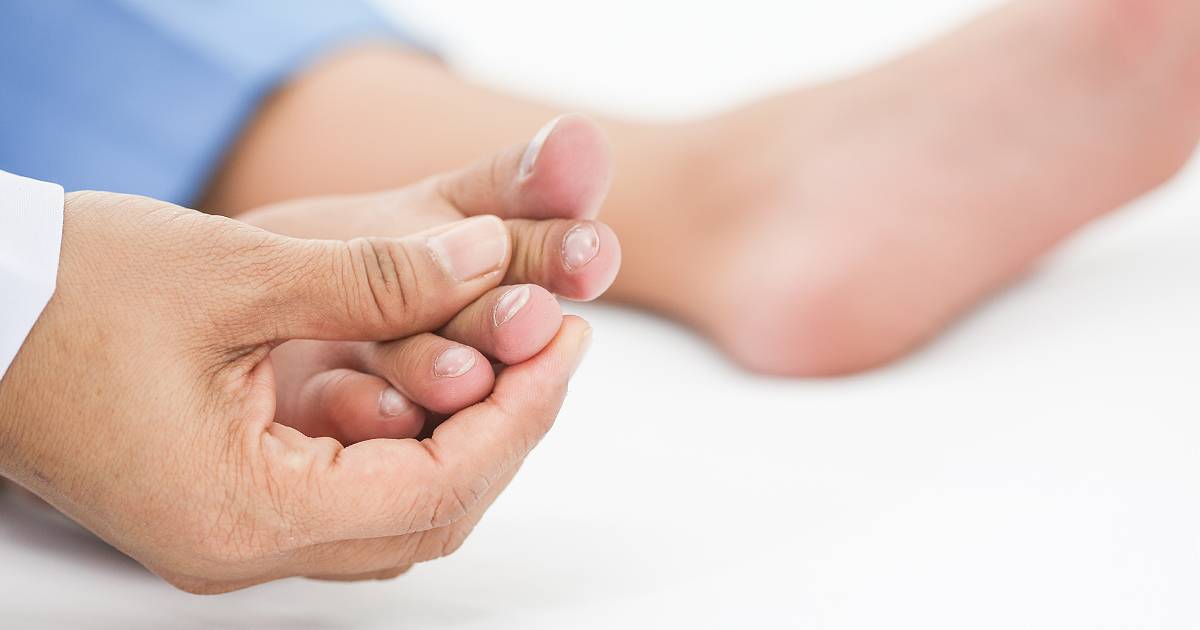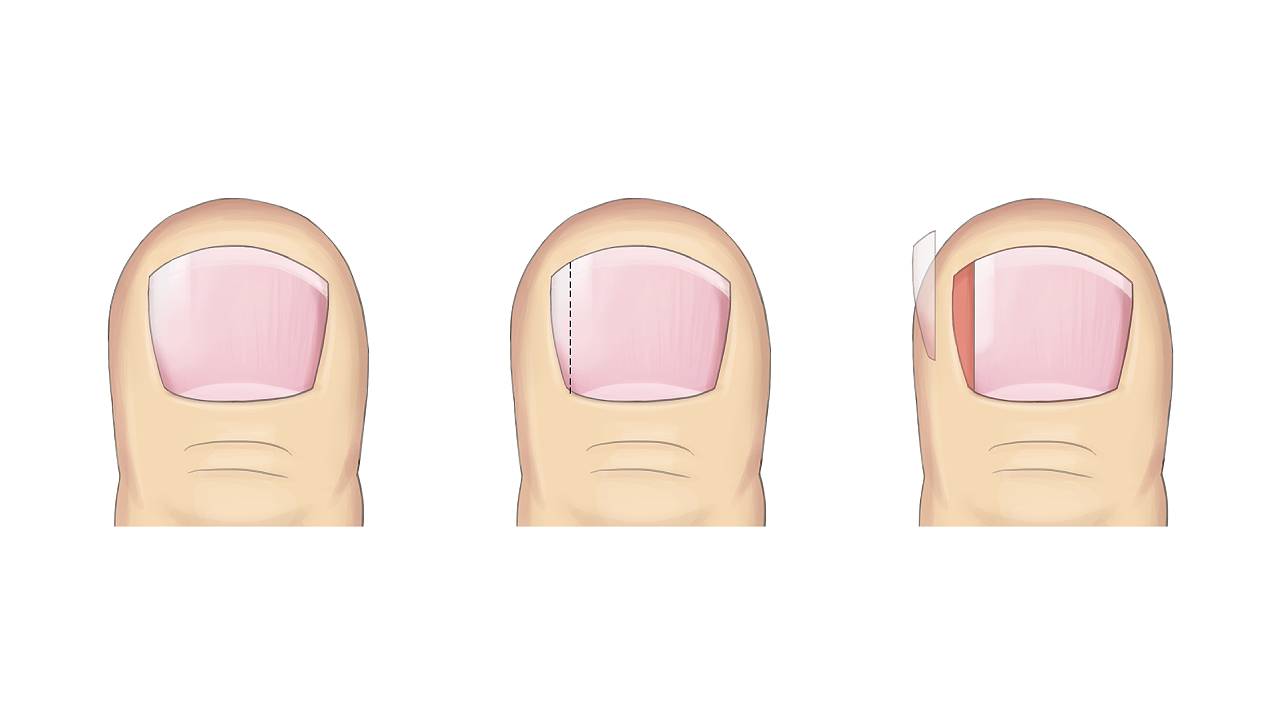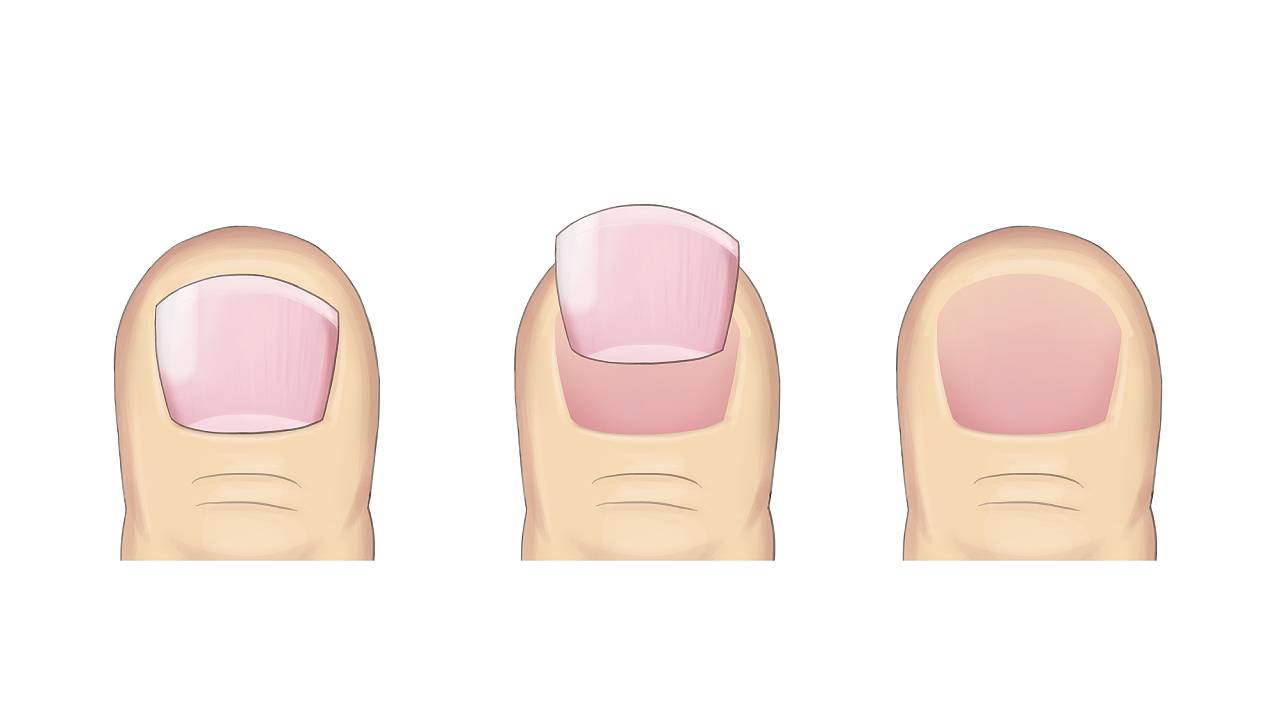
What Are Ingrown Nails?
Onychocryptosis is the medical term for ingrown nails, and it is characterised by the growth of the nail into the skin beside it or the growth of skin over the nail. This can cause pain and, in many cases, an infection that can lead to serious problems related to limb and tissue loss if ignored.
Distal nail embedding is the most common type where the border or corner of the nail grows into the skin and can affect one or both sides of the nail. Ingrown nails are also most likely to develop on the big toe since the pressure on it is the strongest but can present on other toes and the fingers as well.
Signs and Symptoms
- Redness
- Bleeding
- Pus
- Tenderness
- Excessive swelling
- Fleshy growths around the nail
Stages
| Stage 1 | Stage 2 | Stage 3 |
|---|---|---|
|
|
|
Ingrown Toenail management should be sought immediately if the ingrown toenail has progressed to the last stage. Infections can spread quickly across the body, especially to the soft tissues and bones if left unaddressed.
Ingrown Toenail Management
Once the nail shape has changed, an optimal outcome involves the need for surgical removal of the offending nail. The type of procedure performed will depend on the severity of the ingrown nail, inflammation, and the degree of change to the surrounding soft tissues.
There are two main types of nail surgery available: partial, and total.
Partial nail avulsion

Partial nail avulsions are performed only when the ingrown nail portion needs removal. This removal may or may not affect the nail matrix depending on the situation of the toe at the time of surgery. During the procedure, a slim 2-3mm portion of the offending nail is removed.
If permanent removal of the offending nail is required, then the matrix of the nail will be ablated to prevent regrowth in that area, therefore resolving the ingrown nail permanently. This procedure is best suited for ingrown toenail problems without nail dystrophy or thickening.
Total nail avulsion

Total nail avulsion is usually most suitable for thickened toenails, recurring ingrown nails, or nails with severe fungal or bacterial infections that fail to respond to localised management. The entire affected nail plate is elevated and removed. If the nail is not to grow back, then the nail matrix will be addressed to prevent the regrowth of the nail.
Can Routine Nail Care Fix My Ingrown Toenail?
In cases where patients are unable to reach their feet or have higher risk conditions such as heart, rheumatological, systemic diseases, or advanced diabetes, a podiatrist can assist with the proper cutting of toenails to minimise the chances of ingrown toenails and associated complications.
Take care to seek care and intervention promptly. This is especially for high-risk patients where unaddressed ingrown toenails can quickly lead to chronic pain, recurring infections, or limb loss.
How Can I Prevent Ingrown Toenails?
Clip toenails straight across
Avoid cutting down the edges of the nail. Instead, cut straight across and file the edges to reduce sharpness. Take care not to rip or tear your nails as well to minimise the chances of uneven regrowth and ingrowing.
Improperly trimmed nails
Cutting your nails too short, deep, or round at the edges may lead to inflammation of the surrounding tissues and cause the skin to grow over the nails.
Wear proper-fitting shoes
It is advisable to wear square-toed or wide-shaped footwear to ease pressure around the nails. Supportive footwear helps to keep your toes in a comfortable position and allows the nails to grow in a natural, unhindered way.
Tight footwear
Cramped high heels and tight-fitting shoes can place increased pressure on the nails, causing them to become thickened and deformed. This overcrowding can increase the overall pressure on your toes and force the nail shape to adapt by burrowing into the skin.
Awareness and prevention
Take care to be conscious of your surroundings; avoiding furniture, tripping hazards, or potential falling objects that could cause harm to the feet. Wearing slippers at home will help to protect the feet, minimising damage from stubbing or dropping something on the toes.
Nail damage from sports activities can be prevented, it is best to seek professional opinion for reducing such injuries.
If the entire nail has turned blue or black, it needs prompt attention to ensure there are no fractures or nail bed lacerations.
Trauma
Trauma can involve stubbing your toe or dropping something on it. High-intensity activities like sports can also place repeated pressure on the toes, causing the nail to be lifted or pushed into the skin.
Blackened toenails are common when the nailbed has been damaged. The blue-black discolouration occurs when blood has lifted the nail plate from the nail bed, causing internal bleeding.
Attend to infections promptly
Ensuring that your feet are clean and dry, especially after showering, minimises the risk of contracting fungal infections that may warp nails and cause uneven growth. Any noticeable changes to the nail plate or the presence of crumbling material under the nail should be assessed promptly by a podiatrist. Fungal infections are easier to manage in their early stages.
Fungal infection
Ignoring or providing improper care to a nail fungal infection often results in a warped nail shape, involuted nail edges and thickened or distorted nail appearance which is difficult to reverse.
Common Misconceptions
Ingrown toenails go away on their own
In most circumstances, mild ingrown nails can be rectified with home remedies in the early stages. For example, if only a small visible spicule of nail is impacting the flesh and the nail has not changed shape. However, if the nail has changed shape or the condition worsens, such as the onset of infection, seek professional attention immediately. An infection can worsen and spread to the soft tissues or bones if left unaddressed.
Conditions that are commonly mistaken for ingrown toenails include trauma, tumors, and fungal infections of the nail. Therefore, the patient’s medical history and probable causative factors must be carefully examined by a podiatrist so the appropriate diagnosis and management.
Ingrown toenails only develop on the big toe
Ingrown nails can develop on any nail on the body, including the fingernails. Although, it is most likely to develop on the big toe since the first metatarsophalangeal joint bears around 60% of the body’s weight during movement.1
The only way to manage an ingrown toenail is to remove the whole nail
There are multiple techniques to remove an ingrown toenail. However, if you are looking for a permanent solution to the ingrown toenail problem, then a partial or total nail avulsion with matrix removal would be required. Podiatrists at East Coast Podiatry are specialised in minimally invasive ingrown nails removals that produce aesthetically pleasing results. A total nail removal is usually reserved for extremely thick, deformed, infected, or severe ingrown toenails.
Ingrown toenail surgery will be painful
It is natural to be anxious about nail procedures. However, the entire procedure and aftercare is comfortable and mostly pain-free. The toe will be numbed using anaesthetic pre-procedure, ensuring a completely painless process that is over in roughly 15 minutes. Ingrown toenail surgery is considered minimally invasive, with most patients reporting a negligible amount of pain following the procedure and can return to their daily activities by the next day.
Ingrown toenail care can be done at home
Bathroom surgery should not be attempted as it can exacerbate the situation and increase the occurrence of future ingrown toenails. In addition, there’s a risk of puncturing the skin if the nail is embedded deeply, making it easier for the proliferation of bacteria and the onset of infection.
Several conservative methods can be attempted at home to relieve mild cases of ingrown toenails, such as:
- Placing dental floss or a piece of cotton between the nail and skin to separate the two
- The use of over-the-counter topical antifungal and antibiotic ointments
- Foot soaks in solutions with apple cider vinegar, hydrogen peroxide, and Epsom salts
Home remedies may be a simple fix for mild ingrown toenails but should not be used as a cure for more serious cases or certain individuals. Professional care should be sought immediately for individuals with mobility issues, diabetes, or circulatory disorders as ingrown toenails may come with added complications and risks.
Cutting a “v” shape into the nail will help it grow properly
Cutting an indent in the nail does not provide any benefit, and improper trimming or rounding the borders of the nail may cause further problems instead. The proper way to cut toenails in any situation is straight across the nail, ensuring that they are not too short. It would be beneficial to invest in a proper pair of toenail clippers, making sure that they are clean before each trimming session. Filing the nail after trimming is also a great and safe way to remove sharp and rough corners.
Genetics play a role in ingrown toenails
Genetics aren’t directly responsible for ingrown toenails, but some individuals are more susceptible to them because of the way their hands and feet develop. Hereditary factors like this can impact the pronation of their feet and posture which could affect the pressure placed on the nails, and lead some to be predisposed for ingrown nails.
Antibiotics will fix the ingrown toenail
Antibiotics are efficient in reducing infection caused by the ingrown toenail, but the underlying problem remains. Unless the offending section of the nail is removed, the risk of sustaining another infection is still there, and could cause the situation to worsen due to delayed management.
If you are experiencing problems with ingrown toenails and it doesn’t seem to be resolving, contact a podiatrist for a full assessment and clinical care. An early diagnosis can make it easier to manage with significantly lesser complications. Your podiatrist can also help with any worries about biomechanics, nail routine care, or advice on preventing ingrown nails to ensure your toes stay healthy and pain-free.




